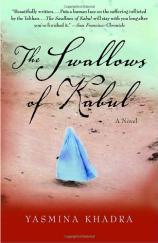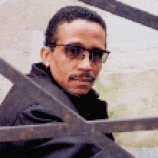Reading Group Guide
Discussion Questions
The Swallows of Kabul

1. Khadra depicts the city of Kabul in exquisite detail. How does the language the author uses turn the city into a presence as vital and as memorable as the people who inhabit it? In what ways does the physical environment mirror the inner lives of the characters?
2. How do small passing moments or incidents bring to life the atmosphere of Kabul? How do the descriptions of the marketplace [p. 19] and the services at the mosque [pp. 40–42 and pp. 93–97], for example, reinforce the fear and sense of claustrophobia that engulfs the city and its population?
3. Why does Mohsen experience "an access of unfathomable joy" [p. 14] when his stone strikes the condemned woman? Is he simply swept away by the fervor of the crowd, or does the incident reflect a deeper need of his own? Is scapegoatism a natural, if highly regrettable, human impulse? What purpose might it serve in society?
4. What does Mohsen hope to gain by revealing his participation in the stoning to Zunaira? Why does he "understand that he should not have confided to his wife what he refuses to admit to himself" [p. 38]? From what you know about Mohsen and the dynamics of his marriage, would it have been possible for him to keep his actions a secret? Why does Zunaira remain silent in the face of Mohsen's appalling confession?
5. Zunaira has steadfastly refused to leave her home or wear the burqa that "cancels my face and takes away my identity and turns me into an object" [p. 77]. Why does she give in to Mohsen's insistence on taking a walk? Is she persuaded by his arguments, or does her decision come from the desire to heal the breach between them? How does Khadra build a sense of uneasiness and impending disaster in the description of their outing? What aspects of Mohsen's behavior turn Zunaira against him? Why does the experience of waiting for him [p. 98] affect her so profoundly? What does she learn about herself and her ability to survive the intolerance that defines her world? What is the significance of her decision "never again to remove her burqa" [p. 125]? Is it a sign of defeat or defiance?
6. Is Atiq's businesslike acceptance of his job and his complicity in the deaths of innocent people an unforgivable moral failing? Do his circumstances --- including his wife's illness, as well as his increasing misgivings about his position as jailer [p. 18] --- mitigate his culpability? Do the conditions in Kabul necessitate the suspension of the usual ethical rules? Do readers also need to modify or even suspend ordinary judgment in evaluating the characters and events in the novel?
7. Initially, we see Musarrat through Atiq's eyes [pp. 26–27]. Do the face-to-face interactions between husband and wife [pp. 53–58] change your impressions of her and of the nature of their marriage? At what point in the novel does Musarrat's character come into her own?
8. What qualities do Musarrat and Zunaira share? What are the differences between them? To what extent are these differences attributable to their respective ages, social position, education, and religious beliefs?
9. Are the issues confronting the two couples universal? How has the situation in Kabul increased the harm and hurt in their relationships? Have their marriages been strengthened in any way by their dire circumstances?
10. In addition to the main plot, Khadra presents the stories of Mirza, Nazeesh, and Qassim. In what ways do these vividly drawn secondary characters expand your understanding of Afghan culture, history, and values? What, for example, does Mirza's advice to Atiq to divorce his wife [pp. 26–27] suggest about the willingness of some Afghans to accept the fundamentalists? What insight does Qassim's character offer into the brutalizing effects of war and tyranny? How does Khadra bring out Qassim's human side? Nazeesh, once a mullah respected for his erudition, "was found one morning stalking along the avenues, wildly gesticulating, drooling, eyes bulging" [p. 65]. Does Nazeesh --- both a holy man and a madman --- see the transformation of his country in a way that eludes the other characters?
11. Compare the sermon delivered by Mullah Bashir [pp. 94–95], Qassim's speech about destiny [p. 118], and Musarrat's musings about her fate [p. 119]. What do these passages demonstrate about the various ways religious teachings can be interpreted?
12. In the context of the novel, has the Islamic clergy abandoned its religious mission and its moral responsibilities? Drawing on what you have read about the rise of fundamentalism in Afghanistan and other countries, do you think that this is an accurate picture? What light does the novel cast on the differences between devout faith and fanaticism?
13. The loss of intimacy is perhaps the most devastating effect of the Taliban's rule. In addition to the troubled marriages of the main characters, how is this theme woven into the novel?
14. References to swallows occur throughout the book, sometimes in literal descriptions and at other times, as metaphors for the women draped in burqas. Why is the juxtaposition of the literal and the metaphorical significant in the context of the novel's themes? What do the swallows symbolize? Do they suggest different things at different times?
15. From the stoning of the adulteress at the beginning of the novel to the stoning death at the end, The Swallows of Kabul presents many images of physical violence. What other kinds of violence does Khadra explore? Can the demeaning treatment of women, the suppression of free expression and movement, and the imposition of extreme religious orthodoxy also be defined as violence?
16. After the attacks of 9/11, America invaded Afghanistan, ending the rule of the Taliban. Despite continuing unrest, Afghanistan held free elections in the fall of 2004. What aspects of Afghan culture might undermine this step toward democracy? Can a Western military presence, as well as Western political and economic pressures, offer lasting solutions to the issues Khadra raises in the novel?
17. In the preface, Khadra writes that the story about to unfold is "like the water lily that blooms in a stagnant swamp" [p. 3]. Which character --- or plot element --- represents the lily? Despite its darkness, is The Swallows of Kabul ultimately a novel about hope and the possibility of redemption?
18. The author, Mohammed Moulessehoul, was an Algerian army officer who originally wrote under his wife's name, Yasmina Khadra, to avoid military censorship. Why does he continue to use the feminine penname, although he has retired from the army and now lives in France? What does this suggest about his views and on his role as a writer?
The Swallows of Kabul
- Publication Date: April 12, 2005
- Paperback: 195 pages
- Publisher: Anchor
- ISBN-10: 1400033764
- ISBN-13: 9781400033768








